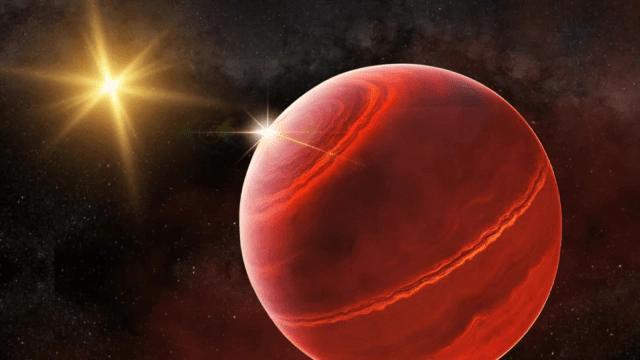
NASA Discovers ‘Cool’ New Alien World That is Bigger than Jupiter
In a groundbreaking discovery, NASA’s Transiting Exoplanet Survey Satellite (TESS) and a team of citizen scientists have uncovered a new alien world that is bigger than Jupiter and has a unique “cool” trait that sets it apart from other exoplanets. The exoplanet, known as TOI-4465 b, is a gas giant that is located almost 400 light-years from Earth, and its discovery has sent shockwaves through the scientific community.
The TESS spacecraft, launched in 2018, is designed to survey the sky for exoplanets, which are planets that orbit stars outside of our own solar system. The spacecraft uses a technique called the transit method to detect exoplanets, which involves measuring the dimming of a star’s light as a planet passes in front of it. By analyzing the data collected by TESS, scientists can determine the size, mass, and orbit of the exoplanet.
In the case of TOI-4465 b, the spacecraft detected a periodic dimming of the star’s light, which indicated the presence of a large exoplanet. But what made this discovery unique was the planet’s size and mass. TOI-4465 b has a mass six times that of Jupiter, the largest planet in our own solar system, and a width of 1.25 times that of Jupiter. This makes it one of the largest exoplanets discovered to date.
But what’s really interesting about TOI-4465 b is its “cool” temperature. Unlike most exoplanets, which are scorching hot due to their close proximity to their stars, TOI-4465 b is surprisingly cool. In fact, it has a temperature of around -100°C (-148°F), which is much cooler than the surface temperature of Earth.
So, how did TOI-4465 b manage to remain cool despite its distance from its star? The answer lies in the star itself. The star, known as TOI-4465, is a relatively small and cool star, with a surface temperature of around 4,000°C (7,200°F). This means that the star emits less heat than larger, hotter stars, which allows TOI-4465 b to maintain a relatively cool temperature.
The discovery of TOI-4465 b is significant not only because of its size and mass, but also because it provides insights into the formation and evolution of exoplanets. By studying the properties of TOI-4465 b, scientists can learn more about how gas giants form and how they interact with their host stars.
The discovery of TOI-4465 b is also a testament to the power of citizen science. The TESS spacecraft relies on volunteers to analyze the data it collects, and the discovery of TOI-4465 b was made possible through the efforts of a team of citizen scientists who worked together to identify the exoplanet.
The discovery of TOI-4465 b is a reminder that there is still so much to learn about the universe and the planets that inhabit it. As scientists continue to explore the cosmos, they are likely to uncover even more fascinating and unexpected discoveries that challenge our understanding of the universe.






